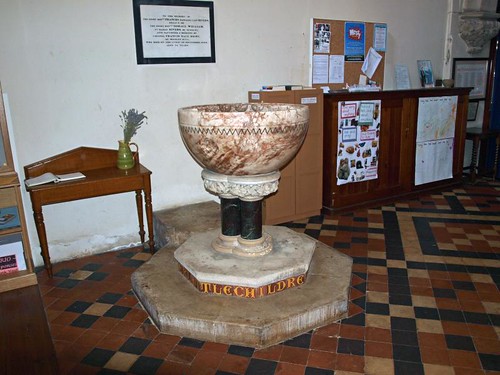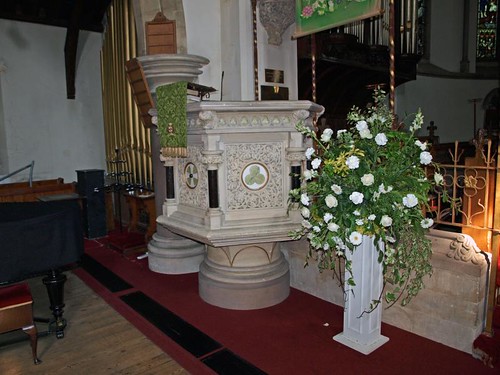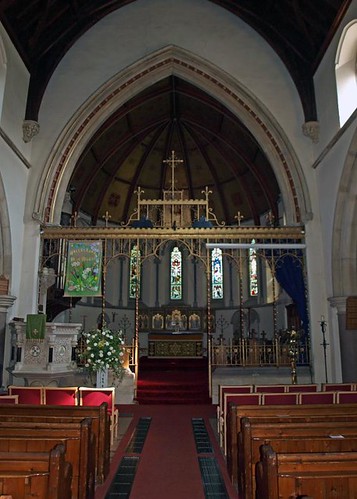The font is hideous, the glass execrable, the pomp and circumstance laughable, the pulpit ludicrous, the rood screen tacky, the organ quite impressive but as a whole it's all really rather nice in a sort of spine juddering way.
Furnishings wise it's somewhat dull but does have very well maintained conjoined CWGC headstones to Walter and Stanley Sargent, who died in 1916 & 1920 respectively (I assume they're brothers) which I found incredibly moving, a memorial from the old church, erected in 1748, for Thomas Osmond who was a protestant martyr burnt at the stake under Mary in June 1555 and a modern day CWGC headstone which always makes you stop and think.
ST MARY 1870-1, by Wadmore & Baker (GR). The style is dependent on Scott. SW steeple with spire; apse; geometrical tracery. - PLATE. C17 Cup.
MISTLEY. It has two ruined churches
and a new one, and it has seen trade on the Stour draw its people down
from the hill to the banks of the river. One of the ruins is a fragment
of a medieval church, the porch alone remaining. Built about 1500, it
has a moulded plinth inlaid with panels of flint, and the buttresses and
the doorway have much beauty in them. The other ruin is of a 18th
century church, forlorn twin towers down in the town. There are memories
of the 18th century church in the new one, a handsome place in the park
with a spire 140 feet high. Its pleasant interior has been enriched by a
carved organ case from Worcester Cathedral and a beautiful window of
the Last Judgement.
On the walls is a tablet in memory of Richard Rigby, a notorious politician who was Paymaster-General in the corrupt days of the taxation which lost America for the flag. It is said that he was no better than he should have been, and he is remembered because he raised his voice against the public funeral of Chatham, and because when he died in 1788 he was found to have amassed about half a million of money out of his public services.



No comments:
Post a Comment